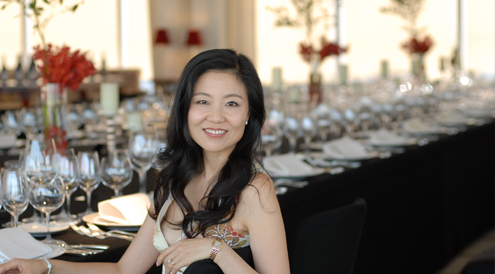
“Are women better tasters than men?”
This is a question filled with landmines — no matter what my answer is, I can’t win. I think most journalists expect me to say emphatically, “Yes, of course women are better tasters. We just haven’t had as much exposure to wine!”
When I begin to explain that women are good at certain elements of wine tasting but not others, I can visibly see their crestfallen faces while they nod their heads and slowly fade me out. I hear them thinking, “Oh another ‘it depends’ answer again with a long explanation and no concrete answer…”
I try my best to articulate what it means to be a good wine taster: It isn’t just about having a wide and deep range of tasting experiences, although this helps tremendously. Being a good taster requires a certain level of appreciation for flavours and sensations, but most people living in Asia who love food already fit this criterion. A sensitive palate, or passionate foodie, will easily recall the precise flavours of gaeng som, a sweet and sour dense Thai soup sold on street side food stalls in Bangkok as much as they will remember the perfect three-Michelin star restaurant meal in Paris. They will remember other details – the day it was tasted, who they were with, how the smell and flavours made them feel and why it was so good.
A good wine taster has an equally detailed memory – recalling the shape of the bottle, the interesting label, the name and producer of the wine, the region, country and vintage, what they ate with it and who they were with. In time, a good taster will build an extensive memory bank of information, or ‘wine memory hooks’ as I like to call them, in which to store a growing file of wine details. Men are often fantastic at this, memorising all the great vintages for regions such as Bordeaux like they remember sports scores. Male Burgundy enthusiasts will talk about Grand Cru vineyards like Chambertin, Musigny or Romanee-Conti with the same reverence and technical details as they talk about their Mercedes, Ferrari or Porsche.
Just building this wine memory bank is unfortunately not good enough to be a great taster, one must be able to articulate how these wines taste. In this realm, women are generally superior. In my women-only wine classes that I ran for years, most women were precise tasters and possessed a wide range of vocabulary to describe wine flavours. Their descriptors were spontaneous, rich and varied, arising from their love for food, ingredients and smells from the kitchen.
Where women struggled was in the connection of the smells and palate sensations to specific wine styles and grape varieties. I remember a woman in my class described a New Zealand Chardonnay beautifully: “This wine is like fresh cut juicy nectarines with a gorgeous crunchy sweetness. I can smell a few slivers of toasted almonds on the side sprinkled over freshly whipped vanilla cream.” But when a similar style of wine appeared again in another class a few weeks later, this time from Australia, she struggled to identify it as Chardonnay. “It doesn’t smell exactly the same,” she proclaimed. “This wine is much more like melons and bananas.” Being precise and detailed means that there are many more categories in the wine memory bank, making it more difficult to quickly categorise a wine into a specific style and distinct grape variety.
Men are more often exposed to wine on a regular basis in both business and social situations; it is expected that sophisticated men know something about wine. This forces men to remember and recall wine names without having to actually remember what they taste like. Meanwhile many women will wax lyrically about a wine they had just a few nights ago but cannot remember any details of the wine, including its name.
This is a classic nature versus nurture issue – in this case, it seems clear that nature gives the greater potential for women to become great tasters. However, society places greater pressure on men to know wine so they make more of an effort to remember and recall wine names and all of its details.
Being a good taster at a professional level is something completely different. It is about knowing your own palate, its biases and weaknesses. It is about coping with palate fatigue in large tastings and knowing when and how to refresh your palate and finish tasting the 100 wines in front of you. It is about having an open mindedness with the ability to understand, evaluate the quality and balance of the wine, regardless of style, not to judge whether you like it or not. It is about listening carefully and thoughtfully to what the wine has to say, given the dimension of time – Is it getting better in the glass? Will it be just as good or better next year? In ten years? Will it actually improve in bottle?
The journalist is now barely listening to me – such a long explanation when what they really wanted was the one-sentence yes or no quote for their story. Meanwhile, I pat myself on the back for having expertly dodged the landmines. Then, the journalist perks up and hurls another question at me: “Do you find that Asians are better tasters than westerners?”
Reprinted with permission from South China Morning Post









